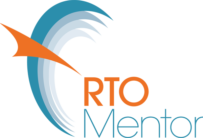Firstly I will refer to what has been removed.
Continuous Improvement and monitoring of client services no longer is in the standard. Access of records of progress for students and the Governance arrangements.
The standards are more outcomes based.
The detail has been removed.
Interestingly the RTO objectives and business planning has also been removed. I find this very interesting as this is an area where potential business owners would do there process of thinking about their RTO. Business planning is a great way to reassess your business and see if you are still headed in a direction that you want it to go. It is also an area that many business owners don’t do. Oh well, I guess I can get of my soap box.
Also removed is the fact that decision making of the CEO needed to be informed by trainers and assessors.
For Initial registration the Self-assessment against VQF is no longer required. The comments came that ASQA found this document didn’t provide much evidence. Instead it will be changed to a declaration against compliance.
The need for the self-assessment will continue until the changeover date.
What changes have taken place in the new RTO standards?
Standard one
Similar to coverage in 15 and 25
Key difference is the introduction of the words practices. Shifting the focus towards what are you actually doing, rather then what your documents say you do. Focus less on paperwork.
Introduction around duration of courses. Standard one is the core of training and assessment, and what RTOs do.
Look at areas such as:
- Trainer and assessor competences
- Industry engagement
- Identifying the needs of individual learners.
- Assessment Validation
- Transition of training products.
Standard two
This is the standard about quality assurance. Similar to 17.3
Much more scope for RTOs to implement quality assurance mechanisms that meet the needs of learners. There are now specific sources of information you use for quality assurance, for instance your QI reports and complaints and appeals.
Look at areas such as:
- Third party arrangements.
Standard three
AQF certification. Similar to the now SNR23. The current standard states you must “recognize” others qualifications…but that made no sense. What does recognize mean? The New standards state you must accept and provide credit. It is Clearer now. It also includes documentation issued by schools and universities. Only applies where it is directly equivalent. It DOES not apply To international students, as they are not under the AQF.
Must issue within 30 days of being competent. If there is a legitimate reason why it was not issued within 30 days then you will not be deemed NC. I.e. submarine on board and not able to issue whilst at sea.
Standard four
Accurate and accessible information.
More transparency in marketing. More specific information that MUST be included. I.e. your RTO code.
Standard-five
Cross over between four and five. Five is largely about specific information prior to enrollment. Look at these two together.
Standard six
Nothing new. It is clearer around the management of complaints and you must have an external review by a person, or body.
Standard seven
Governance. Changes to requirements to the protection of fees. Clearer now. If you are training staff of companies. You do not have to protect those fees.
The standards are not about protecting companies, only individuals.
If you collect less than $1500 in prepaid fees, you do not have to do anything. No longer as complicated.
ASQA can now approve a TAS. Which means they can now have approved TAS available.
Standard eight
Similar to 19 and 20
Must include that third parties must cooperate in audits, and provide information where it is needed. Declaration on compliance must be provided annually. This is a statement about your compliance, honest information saying…yes we had a couple of issues, they were identified and then fixed.
Finally the rules for scoping of audits will be changed. This will appear in the ASQA website at some point in the future. SNR 5 6 7 and 8 are changed.
